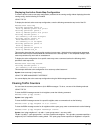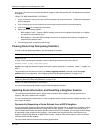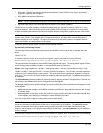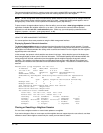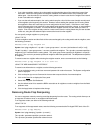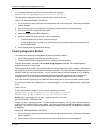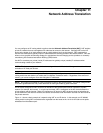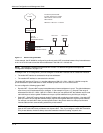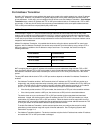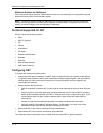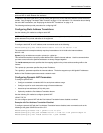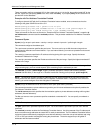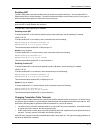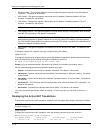
Chapter 11
Network Address Translation
You can configure an HP routing switch to perform standard Network Address Translation (NAT). NAT enables
private IP networks that use nonregistered IP addresses to connect to the Internet. Configure NAT on the HP
device at the border of an inside network and an outside network (such as the Internet). NAT translates the
internal local addresses to globally unique IP addresses before sending packets to the outside network. NAT also
allows a more graceful renumbering strategy for organizations that are changing service providers or voluntarily
renumbering into Classless Interdomain Routing (CIDR) blocks.
Use NAT to translate your private (inside) IP addresses into globally unique (outside) IP addresses when
communicating outside of your network.
NOTE: This feature is supported on all chassis routing switches with Redundant Management modules. It is not
available on HP fixed-port devices.
NOTE: The maximum number of global IP addresses you can configure depends on how much memory the
routing switch has and whether you enable the Port Address Translation feature. Regardless of the amount of
memory, you cannot configure more than 256 global IP addresses.
NOTE: NAT support is available for traffic originated by hosts on the private network. You cannot configure NAT
to translate global addresses into private addresses for traffic generated by global addresses.
An HP device configured for NAT must have an interface to the private network and an interface to a public
network (for example, the Internet). In a typical environment, NAT is configured on the HP device between the
private network and the Internet. When you configure an HP device for NAT, the device does not advertise the
private networks to the Internet. However, the device can advertise route information received from the Internet to
the private networks.
Figure 11.1 shows a basic example of a network using NAT on an HP device. In this example, an HP 9308M
routing switch is using NAT to translate traffic originated from the hosts on the 10.10.10.x/24 sub-net into public
addresses from the address pool.
11 - 1



